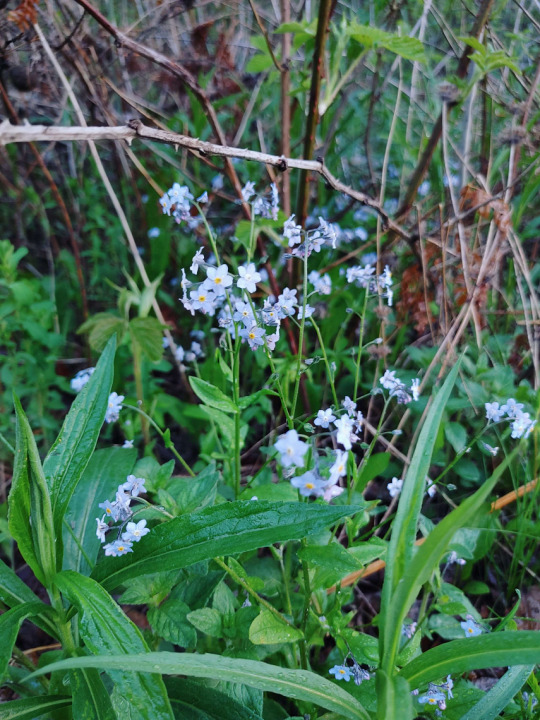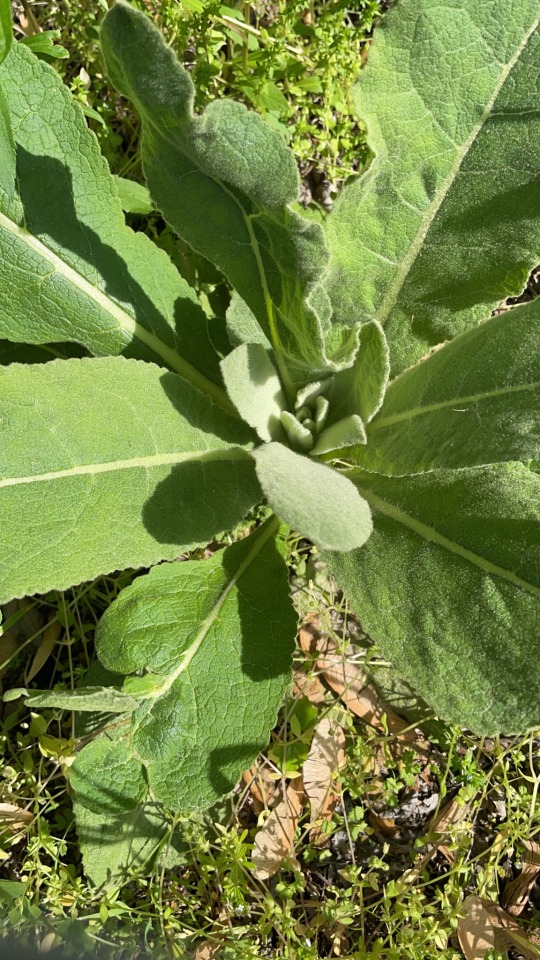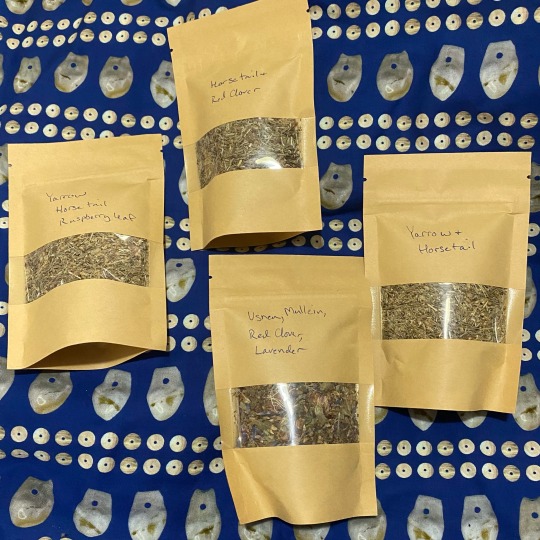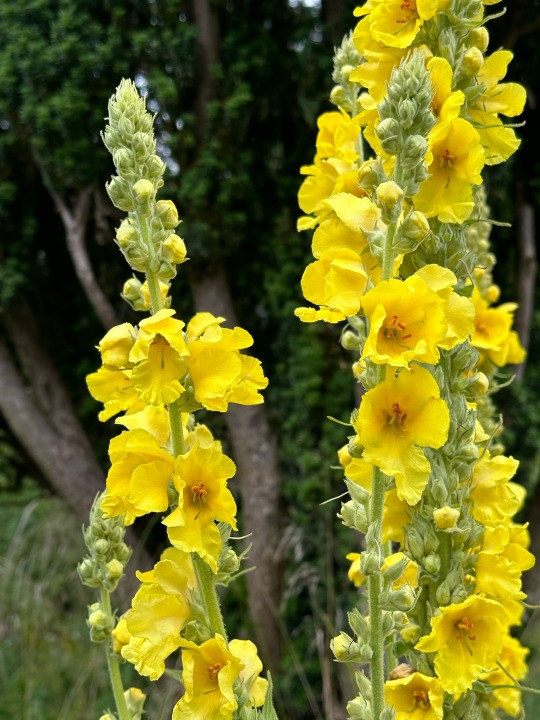#common mullein
Text


#ᐙᐴᔮᓂᐸᑰᓐ#ᒥᓐᒋᒣᓍᐱᑾᓃᓐ#ᒪᔥᑭᑭ#ᓃᓀᑕ#wildflowers#smaller forget-me-not#native plants#and also#invasive plants#common mullein
6 notes
·
View notes
Video
n250_w1150 by Biodiversity Heritage Library
Via Flickr:
The flora homoeopathica :. London :Leath & Ross,1852-1853.. biodiversitylibrary.org/page/6026992
#Botany#Medical#Homeopathy#Materia medica and therapeutics#Materia medica#Vegetable#Pictorial works#Missouri Botanical Garden#Peter H. Raven Library#bhl:page=6026992#dc:identifier=http://biodiversitylibrary.org/page/6026992#flickr#verbascum thapsus#Great mullein#mullein#greater mullein#common mullein#botanical illustration#scientific illustration
15 notes
·
View notes
Text

@believerindaydreams BIG lads (Titus Groan for scale)
#common mullein#this is the worst scale example ive ever provided but there was a Lot of poison ivy and i had no quarters#the book was easily retrieveable
10 notes
·
View notes
Photo


Slagheap mulleins and probably the single most “me” photo to exist
6 notes
·
View notes
Text
A rainy day
Flowers fallen from the common mullein in my garden in the beginning of July. The latin name is Verbascum thapsus.

View On WordPress
0 notes
Text
Foraging Today [21 March 2024]



Common Ground-Ivy (Glechoma hederacea)
Rough Horsetail (Equisetum hyemale)
Mullein (Verbascum thapsus)



Stinging Nettle (Urtica dioica)
Purple Deadnettle (Lamium purpureum)
Common Yarrow (Achillea millefolium)
#alihartforages#foraging#forager#ground ivy#mullein#rough horsetail#purple Deadnettle#yarrow#common yarrow#stinging nettles#stinging nettle#nettles#nettle#queer forager#foragecore
2 notes
·
View notes
Note
Hey this is Ms Aradus depressus AKA Pale-shouldered flatbug. Listen, ive been looking through the notes on that post and apparently "Aradus depressus" is similar to "Aradia" which is apparently a homestuck character or something
Being the open minded flatbug I am, here's what's gonna happen. If the creature resulting from this prompt is a furry animal of some kind, I will read homestuck. If it's a lizard, I will NOT read homestuck. If it's a bug, I will read homestuck and change my pfp to "Vriska" since I think she's controversial or something. Thanks for the new name btw :3
String identified:
t Aa AA a- atg. t, g tg t t tat t a aat "Aa " a t "Aaa" c aat a tc caact tg
g t atg a, ' at' ga a. t cat tg t t a aa , a tc. t' a a, T a tc. t' a g, a tc a cag t "a" c t ' cta tg. Ta t a t :
Closest match: Shargacucullia verbasci genome assembly, chromosome: 30
Common name: Mullein moth

#tumblr genetics#genetics#asks#requests#sent to me#pale-shouldered flatbug#bugs#insects#moths#mullein moth#homestuck#godspeed soldier.
622 notes
·
View notes
Text
What's really in that witch's cauldron?
Folk names for herbs
Ass' Ear- Comfrey
Bat's Wing- Holly Leaves
Beard Of Monk- Chicory
Bear's Foot- Lady's Mantle
Bird's Eye- Germander or Speedwell
Blind Eyes- Poppy
Blood From a Head- Lupine
Blood Of Ares- Purslane
Blood Of Hestia- Chamomile
Bloody Fingers- Foxglove
Calf's Snout- Snapdragon
Cat's Foot- Ground Ivy
Crow's Foot- Wood Anemone
Devil's Ear- Jack In The Pulpit
Devil's Plaything- Yarrow
Dew Of the Sea- Rosemary
Dog's Mouth- Snapdragon
Dragon's Teeth- Vervain
Elf Leaf- Lavender
Englishman's Foot- Common Plantain
Fairy Eggs- Nutmeg
Flower Of Death- Vinca
Goose Tongue- Lemon Balm
Graveyard Dust- Mullein
Hawk's Heart- Wormwood
Juno's Tears- Vervain
Jupiter's Beard- Sempervivums
Lion's Foot- Lady's Mantle
Little Faces- Viola
Man's Bile- Turnip Sap
Mortification Root- Rose of Sharyn
Nose Of Turtle- Turtlehead, Chelone
Nosebleed- Yarrow
Our Lady's Tears- Lily Of The Valley
Old Man's Flannel- Mullein
Ram's Head- Valerian
Scale Of Dragon- Tarragon
Semen Of Ares- White Clover
Semen Of Hermes- Dill
Serpent's Tongue- Dog's Tooth Violet
Sparrow's Tongue- Knotweed
Tree Of Doom- Elder
Unicorn Root- Boneset
Weasel Snout- Yellow Archangel
Wool Of Bat- Moss
Body Parts as Plants:
Eye- Blossom or Seed
Heart- Bud or Seed
Beak, Bill or Nose- Seed, Bud or Bloom
Tongue or Teeth- Petal or Leaf
Head- Blossom
Tail- Stem
Hair- Dried Herbs or Stringy Parts Of Herbs
Privates, Genitals Or Semen- Seeds Or Sap
Blood- Sap
Guts- Roots or Stalk
Paw, Foot, Leg, Wing or Toe- Leaves
Animals as Plants:
Toad- Sage
Cat- Catmint
Dog- Grasses, Specifically Couchgrass
Frog- Cinquefoil
Eagle- Wild Garlic
Blue Jay- Laurel
Hawk- Hawkweed
Lamb-Wild Lettuce
Nightengale- Hops
Rat- Valerian
Weasel- Rue
Woodpecker- Peony
I borrowed this from:
#witchcore#witchy#witchcraft#witch#witchblr#magick#cast spells#moon#crystals#moon magic#witches of tumblr#witches#witchyvibes#kitchen witch#witch community#witch tips#witchaltar#witchlife#witchythings#spells#grimoire#spellcraft#cleansing#spellwork#witch tip#my spells#herbsforspells#herbs#herbalist#witch herbs
8K notes
·
View notes
Text
52 herbs/plants for the @2024-grimoire-challenge
including: some of my favourites, some local plants, and some i know are in my cabinet
bay
echinacea
crape myrtle
sorrel
nettle/deadnettle
sunflower
lemongrass
mullein
mugwort
star anise
olive leaf
hibiscus petals
hawthorn berry
st. john's wort
dandelion root
eucalyptus
calamus root
anise seed
angelica root
hyssop
orange peel
cedar
calendula
lemon peel
jasmine
chamomile
rosemary
thyme
sumac
basil
sesame
garlic
oak
dogwood
magnolia
juniper
sage
dandelion
willow
ginger
cinnamon
maple
clove
ragwort
salvia
hackberry
rose
violet
ironweed
cattails
sweetgum
lemon balm
what i'll be looking for while researching/how i'll be structuring my research entries under the cut
name of plant: scientific and most common names
location: current locale, origin, climate it prefers, invasive status
identifying characteristics: leaves, flowers, stem, smell, colour, all that
method of acquisition: how easy is it to get/where to get it
use: medical, agricultural, industrial, culinary, cultural, magical
personal notes: my experiences with this plant + any salient UPG
image: best artistic rendition i can manage
69 notes
·
View notes
Text
Herbalism 101: Garlic
EP. 4

Fun fact! During World War I, garlic poultices were used to treat wound infections because of its strong antiseptic and antibiotic properties.
Properties: Protection and cleansing
Uses in the kitchen
Garlic is far from a rare ingredient in most peoples' kitchen. Using extra garlic in your recipes can provide protection or banishment. Making fire cider for fall/winter is one of my favorite ways to use garlic for both emotional and physical protection.
Uses in healing
Garlic has been used in herbalism for centuries, but it is still used by herbalists today to improve hypertension and to help with high cholesterol. Using garlic for its anti-septic properties is another common way to incorporate it into your herbalism practice.
Uses in witchcraft
Putting a braid of garlic above your door can be a good way to banish jealous people. You can also use crushed garlic to pull out negativity by putting it under someone's chair or your bed for 24 hours and then burn it. It is also associated with the goddess Hecate and can be used as an offering.
Tips for growing at home
1. Split the head of garlic and plant the larger cloves with the pointy side up.
2. Depending on your climate, different types of garlic may be better.
3. Keep it moist!! Garlic has a pretty long growing period and it needs to stay watered.
Recipe
One of my favorite uses for garlic is garlic syrup. It is great for helping respiratory problems.
You need water and freshly peeled garlic cloves (I usually slice them once down the middle to open them up). Simply boil the water and pour over the garlic. Let it stand for 12-24 hours. I usually add sugar to make it sweeter, but you can add things like mullein or crushed red pepper to change its taste.
#herbalism 101#herbalmedicine#herbalism#witchcraft#kitchen witch#green witch#cottage witch#herbs#magick#witch#spellwork
260 notes
·
View notes
Text
recently started making and selling tea blends in person, would you guys be interested in buying them online too? i am making a little write up for each blend and what they are good for since thats something i wanted to add to the bags anyways. bags are vacuum sealed and hold about 20g (varies based off the blend) they would be $6 a bag except the usnea/mullein/clover/lavendar which would be $8 since usnea is much less common and usually requires more work

23 notes
·
View notes
Text
LOKI

WHO IS HE?
Loki is the Norse God of mischief and trickery. He is known for his unpredictable and manipulative nature, which frequently involves playing practical jokes or pranks on other Gods, mortals, and giants. He is also the God of fire, and he has a strong connection to the underworld and the realm of the dead. Loki is often portrayed as a shapeshifter who can take on the form of various animals, including snakes, foxes, bats, and even horses. He is also often associated with fire, creativity, innovation, and destruction.
BASIC INFO:
Appearance: his appearance in Norse mythology can vary greatly, depending on the source. In some depictions, he is described as being a tall and handsome male figure with red hair and a beard. In other depictions, he is described as being a more feminine or androgynous character, with long and straight red hair, along with smooth and pale skin.
Personality: Loki is a clever and devious character, known for his ability to manipulate and deceive others with his cunning and wit. He is also known for his unpredictable nature, his tendency to get himself into trouble, and his proclivity for causing chaos and disorder. He is often seen as a trickster and a troublemaker, who enjoys creating disruption and chaos.
Symbols: serpents, wolves, ax, raven, masks, fire, Bjarken and Logr Runes, fishing nets, earthquakes, infinity snake and ouroboros, number 8, chaos star, runes that spell out his name: Laguz, Othala, Kenaz, Isa as well as the rune Hagalaz, and Helmet of Dread or the Helmet of Horror
God of: mischief, trickery, and fire
Culture: Norse and Germanic
Plants and trees: mistletoe, birch, common Haircap moss (Loki’s Oats), bentgrass (Loki’s Grass), cinnamon, dandelion, beech, blackthorn, elder, elm, ivy, juniper, mullein, thistle, mint, holly, cedar, juniper, elder, clove, patchouli, tobacco, willow, and yew
Crystals: jade, obsidian, sapphire, amethyst, garnet, citrine, black tourmaline, serpentine, carnelian, fire opal, black onyx, cat’s eye, xenotime, chrysoberyl, and labradorite
Animals: salmon, birds (crows, ravens, falcon, and vultures), flies, goats, flea, horses, wolves, serpents, foxes, and spiders
Incense: dragon's blood, frankincense, myrrh, patchouli, and basil
Colours: green, gold, black, violet, yellow, orange, and red
Numbers: 4, 6, 8, 9, and 13
Zodiac: Gemini
Tarot: The Fool, The Tower, The Devil, The Wheel of Fortune, Page of Cups, and Seven of Swords
Planets: Mercury and Venus
Days: Thursday, Friday, Lokablót, April Fool’s Day, Yule, Autumn Equinox, Samhain, Friday the 13th, the 13th of each month, and Lokabrenna Day
Parents: Fárbauti and Laufey
Siblings: Odin (blood brother), Helblindi, and Býleistr
Partners: Angrboda, Sigyn, and Svadilfari (a horse), and Glut
Children: Fenrir, Jörmungandr, Hel, Váli, Narfi, and Sleipnir (Odin’s horse)
MISC:
• Fire: Wagner combined Loki with Logi, the fire god, in his Ring Cycle. And ever since, Loki has been associated with fire and magic in pop culture. There are some very iffy pieces of evidence that Loki might have had some historical connection with fire (e.g., the Snaptun stone and medieval folklore about the Ash Lad) but the scholarly consensus is “Nope, blame Wagner.” That said, fire, with its dual roles of creation and destruction, enlightenment and passion, is a pretty potent symbol for Loki even if it doesn’t have a historical basis.
• Red hair: Loki’s hair colour is never mentioned in the lore, and there are some illuminated Icelandic manuscripts in which he is shown as a blond or brunette. The fire god mistake mentioned above probably popularized the redhead image. (Interestingly, Thor is canonically a redhead.)
• Fishing Nets: in Gylfaginning, Loki weaves a fishing net while on the lam and hiding from the Aesir. (The story kind of implies it’s the first fishing net, although Ran is also credited with inventing them elsewhere.) Loki turns into a salmon to escape but ends up being caught with his own creation,
• Earthquakes: the prose epilogue to Lokasenna claims that earthquakes are caused by Loki writhing in pain when Sigyn leaves to empty her venom-catching bowl.
• Masks: while Odin, not Loki, takes the name of Grímnir (the masked one) in the lore, masks are a fairly logical thing to associate with a shapeshifter.
FACTS ABOUT LOKI:
• Name: Loki is named after the Norse word "loki," which means "mischief maker" or "trickster."
• Role: in Norse mythology, Loki is known as a chaotic and mischievous figure who frequently causes problems for the God’s.
• Relationships: the son of the frost giant Fárbauti and the giantess Farbauti, and is the brother of the Goddess Hel.
• Origin: he is a Jötunn or giant who is the son of the Jötunn Fárbauti, which means "dangerous strike."
• Associations: Loki is connected to the realms of chaos and trickery and is often seen as a troublemaker and instigator of conflict.
• Connection to Thor: he is the half-brother of Thor, and has several encounters with the god of thunder. In one famous example, Loki tries to trick Thor into drinking a powerful liquor called "Módrunar," which causes him to become extremely drunk.
• Powers: he is a powerful deity with a wide range of abilities, including shapeshifting, sorcery, illusions, and knowledge.
• Association with Trickery: Loki is closely associated with the concept of trickery, often utilizing his skills as a master manipulator to cause trouble for the God’s.
HOW TO WORK WITH LOKI:
The best way to work with Loki is to respectfully is to approach him with sincere devotion and reverence. He is a God of mischief and chaos, so a certain level of humor is appropriate when working with him, but that doesn't mean you should take him lightly or treat his power with disrespect. To worship him respectfully, make an offering, either something tangible or a gesture like writing a poem or performing an act of mischief and chaos in his name. Be genuine and open in your intention, and don't be afraid to get a little mischievous yourself.
Some ways to works with Loki include:
• Doing things that embody his energy and traits, such as pranks or mischief
• Making offerings to him, whether physical or spiritual
• Creating a dedicated altar space
• Studying and researching Norse mythology, particularly his role in it
• Performing rituals and spell casting to seek his guidance and insight
• Meditating on his energy and listening for a response
• Performing acts of chaos and destruction
• Seeking to gain his protection through protection magic or rituals
PRAYER FOR LOKI:
To begin, you can address him by name and say something like:
"Great God Loki, bringer of chaos and master of deceit, I come to you seeking guidance and destruction. I offer my heart and spirit and ask for your blessing in this pray.”
"Thank you, Great God Loki, for listening to my words and walking by my side on this journey. I leave this altar/ritual space in your hands, and I ask for your protection and mischief wherever I may go. Hail Loki.”
WHAT ARE SIGNS THAT LOKI WANTS ME TO WORK WITH HIM?
If your request to work with Loki has been accepted, here are some signs that you can look for:
• Feeling a strong attraction or draw to his energy or presence
• Having repeating thoughts or dreams about him
• Feeling drawn to chaos or chaos magic
• You’ll start seeing his name everywhere – in books, on TV, online, etc.
• There might be a sudden change in your life, an unexpected sometimes painful change
• It will seem someone is playing tricks on you, particularly when it comes to your spiritual spaces like your altar
• Be wary of fires that are started in random places
• You might see his symbols or signs everywhere you go including the snake, spider, runes like Hagalaz and Isa, the Chaos star, number 8 or Ouroboros
• The TV show Loki or Marvel character might start popping up everywhere (yes I believe Loki communicates through this guise because it’s a form we know and understand)
• You might already have a connection with Odin, Loki’s brother
• Spiderwebs will appear in your space – in the home, workplace, or vehicle
• Loki’s sacred animals will appear as signs to you including the horse, fly, spider, snake, salmon, vulture, wolf, fox, etc.
• Experiencing signs of change or transformation in your life
• Feeling a sense of rebelliousness or mischief within you
• A sense of giddiness, playfulness, and light-heartedness after praying to him or meditating on his energy.
• Feeling of warmth or presence in the air around you.
• An increased sense of creativity, spontaneity, and a general desire to explore and experiment.
• Feeling a connection with nature or animals in a new or stronger way than before.
• Experiencing unusual or unexpected occurrences that seem a bit too strange to be coincidental.
If your request to work with Loki has not been accepted, you may notice the following signs:
• A lack of vivid dreams or visions about Loki.
• A sense of confusion, uncertainty, or indecisiveness in regards to your connection with Loki.
• A feeling of unease or discordance in your relationship with Loki.
• A feeling of discord or disinterest in your spiritual practice with Loki.
• An overall sense of discomfort or dissonance, rather than a sense of harmony and ease.
Overall you need to be respectful of deities denying your request
OFFERINGS:
• Candles, especially black ones.
• Incense, a musky or mysterious scent would be appropriate.
• Red fruits or flowers.
• Gems or metals.
• Herbs such as dill, ginger, and mugwort.
• Art or poetry.
• Toys, such as the ones you used to play with as a kid.
• Acts of chaos, subversion, or mischief.
• Flowers: daisies, roses, and lilies.
• Crystals.
• Hanging mistletoe at Yuletide.
• Foods and drinks: sweet foods, alcohol, spicy rum, mulled wine, chocolate with nuts or funny names, spongecake, coffee or other caffeinated beverages, honey, and pastries.
• Knives and daggers.
• Doing something you’re scared of (safely).
• Cinnamon.
DEVOTIONAL ACTS FOR LOKI:
• Challenge authority figures and shake things up
• Break rules and defy expectations
• Live a life of surprises and twists
• Explore your trickster side and have some fun with your mischief
• Embrace the shadow-self
• Let your inner child out (if not heal them first)
• Don’t take yourself too seriously.
• Be the devil’s advocate.
• Speak the truth and uphold it. This also involves speaking your mind about politics and issues.
• Express yourself.
• Indulge in art or create art. (Loki loves it when people dive deeply into their creative fire. He also rewards them for it)
• Live life to the fullest.
• Light a candle for him the moment you wake up and during bedtime. (I personally found out that he likes red and green candle but if those are not available, white can suffice).
• Burn some incense (cinnamon, sandalwood and dragon’s blood are some of Loki’s favorites but if he tells you otherwise, it’s okay).
• Stop planning and just be in the moment.
• Embrace chaos (and make it your bitch, as Loki would say).
• Cultivate a sense of mystery and playfulness.
• Be unpredictable and keep your friends on their toes.
• Push your boundaries and experiment with your boundaries.
• Break the norm and be yourself.
• Adopt a prickly succulent baby or an abandoned animal. If you can’t adopt, volunteer in shelters or be a foster paw-rent.
• Collect toys that you will both enjoy.
• Play board or video games.
• Cook meals and eat with him (cook whatever meal catches your fancy and then eat at his altar).
• Hoard jokes, puns and memes (VERY IMPORTANT! Loki loves his humour but in good taste. He seems to dislike and would often refute humor made in bad taste like triggering and racist jokes).
• Give without expecting anything in return.
• Share laughter with loved ones.
• Light a candle in his honour.
• Be kind to those are are outcasted.
• Wear a piece of jewelry that reminds you of him.
• Doodle.
• Watch a fiery sunset.
• Draw him and/or write to him.
• Smiling.
IS IT SAFE TO EAT OR DRINK AN OFFERING I GIVE TO HIM?
Yes, it is generally considered safe to consume or drink offerings you give to Loki. The concept of eating or drinking offerings in worship is a way of bringing a deity's energy and power into your own body. Consuming or drinking an offering can strengthen your bond with the deity and help you gain their insight and guidance. However, it's important to be mindful of what the offering is and whether or not it is safe for consumption. Depending on the offering, it may be necessary to prepare it in a specific way in order for it to be safe to consume.
#fyp#fypシ#fypシ゚viral#fypage#fyppage#tumblr fyp#satanism#satanist#deity#deity work#deity worship#occult#norse mythology#germanic#loki#trickster#god#information
36 notes
·
View notes
Text



Plant of the Day
Thursday 10 August 2023
The biennial Verbascum thapsus has an amazing collection of common names including: Aaron's rod, ag leaf, beggar's blanket, bullock's lungwort, candlewick, clown's lungwort, common mullein, cow's lungwort, duffle, feltwort, flannel leaf, fluffweed, hare's beard, hedge taper, Jupiter's staff, king's taper, lady's candles, lady's foxglove, light of the Lord, lucernaria, mullein dock, great mullein, rag paper, shepherd's club, torch lily, torches, velvet dock, woollens, woundweed.
Jill Raggett
146 notes
·
View notes
Text
Herbalism 101: Mullein Leaf
Fun fact: Mullein is a member of the Snap Dragon Family.

The Mullein plant has been around for years and has more than 200 species. The most popular type is common mullein (Verbascum Thapsus.)
the leaves harvested near the bottom of the plant and used either dried or fresh.
Mullein flowers and leaves were used on animals and people for a variety of issues:
Cough
Congestion
Bronchitis
Asthma
Constipation
Pain
Inflammation
Migraine
Sleep
Gout
By the late 1800s, mullein became a popular treatment for people with tuberculosis in Europe, the United States, and the United Kingdom. Keep in mind that many of the benefits of mullein are based on anecdotal experiences. More human clinical studies are needed to understand the benefits of this herb. -Healthline
Mullein leaf is sold in various forms:
Tea
Extract
Oil
Powder
Capsule
Elixir
Some can be made into creams.
Some herbalists recommend mullein for respiratory and inflammatory conditions, but there is not enough scientific evidence of its effectiveness. -Healthline
Dioscorides, a Greek physician pharmacologist and botanist, practicing in the 1st century in Rome, who authored the herbal De Materia Medica, was one of the first to recommend mulleins use in lung conditions around 2,000 years ago. It was used as a hair wash in ancient Roman times; the leaf ash to darken hair, and the yellow flowers for lightening it. The leaves were dried, rolled and used as wicks for candles and the entire dried flowering stalks were dipped in tallow and used for torches, hence the names 'candlewick plant' or 'torches'. According to Maida Silverman in her book A City Herbal, " The great respect and love formerly accorded to mullein can be inferred from the number and variety of the folk names for it." -Mountain Rose herbs.
Mullein leaf, flower, and root, with its litany of folk uses ranging from 'nature's toilet paper' to an effective apotropaic (fancy word meaning that which wards off evil spirits), have been used extensively in folk medicine. Its magical qualities were numerous, going beyond simply warding off evil but also was thought to instill courage and health, provide protection, and to attract love. In fact, it was believed that wearing mullein would ensure fertility and keep potentially dangerous animals at bay while trekking along in the wilderness. Further, allegedly a practice for men in the Ozark mountains to attract love consisted of simply pointing the mullein's flowering stalk towards the direction of his love's house and seeing if the stalk went upright again indicating her reciprocated love. Mullein, like so many herbs of European origin, was introduced by the colonists and then incorporated into the Native American healing tradition. The root was made into a necklace for teething infants by the Abnaki tribe, the Cherokee applied the leaves as a poultice for cuts and swollen glands, and other tribes rubbed the leaves on the body during ritual sweat bathes. Additionally, the flowers were used internally as teas and topically as poultices. The Navajos smoked mullein, referring to it as "big tobacco" and the Amish were known to partake as well. Presently, mullein can be found at health food stores often prepared as soothing leaf tea or an ear oil made of the infused flowers. -mountainroseherbs
According to King's American dispensatory (a book first published in 1854 that covers the uses of herbs used in American medical practice), "upon the upper portion of the respiratory tract its influence is pronounced." Mullein was prescribed by Eclectic Physicians (a branch of American medicine popular in the 1800-early 1900's which made use of botanical remedies) who considered it to be an effective demulcent and diuretic, and a mild nervine "favoring sleep." -Mountain Rose herbs.
DISCLAIMER: Precautions
Small hairs on mullein leaf may cause mechanical irritation in the mouth and throat if not filtered out of extracts prior to consumption. We recommend that you consult with a qualified healthcare practitioner before using herbal products, particularly if you are pregnant, nursing, or on any medications.
#hearth witch#kitchen witch#pagan#witch blog#herbal magick#herbs#witch#kitchen witchery#witchcraft#green witch#witchy#pagan witch#witch aesthetic#witches#witchyvibes#baby witch#cottage witch#earth witch#forest witch#hedge witch#lunar witch#nature witch#witch community#witch familiars#kitchen witchcraft#witch core#witch history#witch tips#witchblr#witchcore
131 notes
·
View notes
Text
happy saturdayyy
aka diēs Saturnī, or Saturn's day.
Of course it is associated with the Roman deity Saturn, but also the Greek Kronos (and Hekate in my opinion), the Hindu Shani, the Etruscan Satre, and the Norse Loki to name a few.
Common associations with Saturday, its gods, and its planet are karma, self-discipline, change, learning lessons, authority, the more forceful and authoritarian side of leadership, and rigidity.
Saturdays are a great day for getting our lives in order - start breaking habits, make a plan to work hard, get things done, plan to amend our ways, reduce self-indulgence, and be more stern with ourselves.
Spells and rituals that are great for Saturdays are: protective spells, grounding spells or meditations, cord cutting [regarding setting boundaries or cutting our relationship with a habit], banishing, and spells regarding career or specific material/monetary goals, and baneful magic (don't @ me lmao).
Great tools that amplify this energy are black and red candles, salt/black salt, onyx, obsidian, black tourmaline, root vegetables, mullein, black pepper (in my opinion), "baneful" plants, juniper, or really any plants that handle adverse conditions well.
ok enjoy your Saturday, byeeeee
#saturday#weekly magic#magic#saturn#astrology#hekate#kronos#satre#shani#loki#witchblr#witchcraft#pagan#hellenic#spells#herbs#crystals#gem stones#banishing
50 notes
·
View notes
Text
fantastical au where crown prince wilhelm is publicly outed mere months before his coronation, and in his anger and grief he goes to simon, a renowned fashion designer known for infusing his creations with a touch of magic, and he asks simon to make him a suit of armor for the coronation, to show the kingdom how strong he is, to prove he is untouched by their scrutiny.
simon agrees, but with one condition: he will make the armor, but he will also make something that he feels is more what wilhelm needs for this occasion. he will bring both to wilhelm on the morning of the coronation, and all he asks it that the king-to-be consider both before choosing. wilhelm accepts his terms.
the day of the coronation arrives and simon comes to the palace with both creations. he reveals the armor first. it is resplendent, a dark blue like lapis lazuli, as if the night sky were made into a waterfall which was turned into steel. it is more than wilhelm had hoped for.
but the second outfit - the second outfit is a suit woven entirely of fresh flowers that grow across the kingdom. mullein, chickweed, cornflower, honeysuckle, harebell, lily of the valley. there is a sash of common ivy and epaulets of brunkulla. "even if you do not choose this one," simon says, "i thought you might need a reminder that being soft does not have to be a weakness."
king wilhelm becomes known as the flower king.
after the coronation, the king asks simon to come to the palace permanently, as a trusted advisor. simon declines, for he values his independence. "but if you liked what i made for your coronation," he says, with a smile that blooms like arctic violets, "you should let me make you breakfast sometime."
#young royals#wilmon#i've had the image of wille in a flower suit in my head for a few days#i wanted simon to make it with a touch of magic#and idk this just happened
90 notes
·
View notes